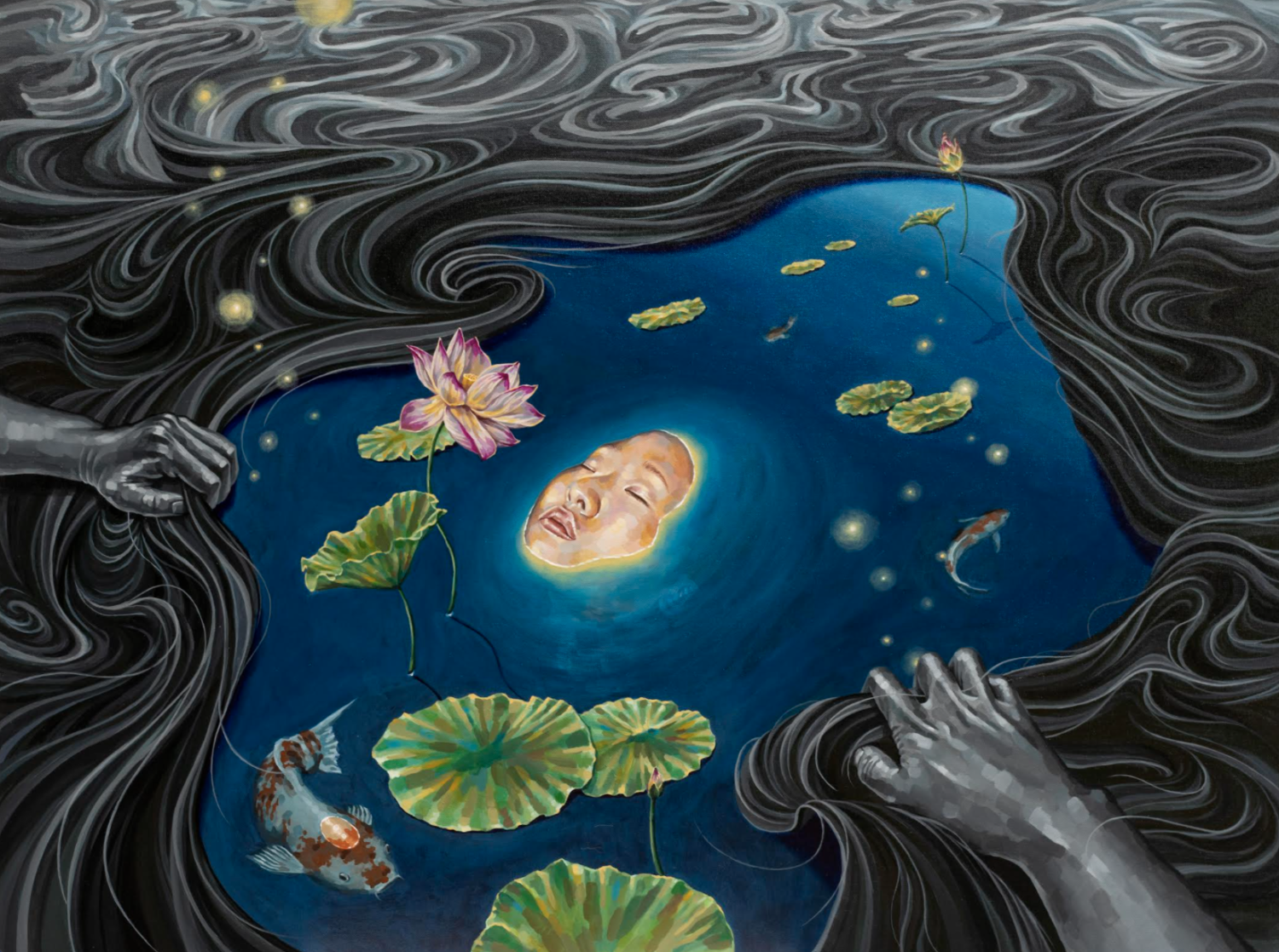We were idols and emperors, shamans and spiritual intermediaries, loved and liberated in a bygone era. In what would come to be called the Philippines, trans women once lived in the image of Lakapati, a deity of fertility and agriculture. In ancient Sanskrit texts, the king Bhagiratha was said to have had two mothers. Queerness and gender fluidity were long revered across the sprawling Asian continent, until, of course, European hegemonic influence swept them away, instating violent, exclusionary structures and creating the irrevocably colonial concept of a social margin. Today these margins persist, propagating violence against LGBTQ+ communities in countries recovering from colonization, while some queer populations make great strides in post-colonial western Europe.
My Asian American peers and I live within a similar, albeit stunted margin. Residents of a nation that has been both colonizer and colony, we are made both victims of and accessories to America’s not-so-vestigial white supremacist ideals. Our image as the model immigrant workforce is used to defend the myth of the American meritocracy, almost always at the expense of Black and Latinx Americans. We are depicted in the predominantly White entertainment industry as side characters or punch lines, never to distract audiences from the omnipotent image of the masculine White man. We are told that we have it good, that we should appreciate our proximity to whiteness. But what do we make of the Atlanta massage parlor shootings, or the beatings of our elders in the streets, in the shadow of this enforced ethnic ignorance?
Poet Cathy Park Hong’s theory of “minor feelings” describes the anger and loneliness felt by Asian Americans of many nationalities, writing that “American optimism is forced upon you, which contradicts your own racialized reality.” I feel Hong’s dissonance as a Harvard student from a high school with a White student majority; instead of simple triumphs, my academic successes serve as fodder for my simultaneous liberation and subjugation. My good grades tell White America I’ve assimilated, news that can only encourage reactionary xenophobic hate or invalidate instances of Asian peril. My merits are a vicious message to other Asian kids: Expect this of yourself, despite your struggle.
Queerness adds another messy, contradictory layer of identity to reckon with. The trauma that follows the coming-out process only worsens when the reality of White-dominated queer spaces sinks in: Asian hate thrives there, too. Shame begets shame, and so some Asian queer kids, starved for affection and a sense of belonging, find community only in dating apps, which can be cesspools for fetishization and other forms of predatory behavior. The throes of this queer and Asian unbelonging are unruly and unpalatable, likely due to their sheer complexity. Present as my community’s issues may be, they are not easy topics for conversation. How, then, do we seek liberation among the multidimensional planes of our collective gender-based, sexual, racial, and colonial consciousness? How do we bend our multifaceted moral arc toward justice?
Intersectionality is often touted as the end goal of this struggle. Kimberlé Williams Crenshaw, a leading scholar in the field of critical race theory, first coined the term to summarize the cumulative and interactive impacts of multiple levels of identity-based marginalization on the individual and their community, as well as the purposeful inclusivity and social movement needed to resolve them. Crenshaw has done a tremendous amount of work to apply these ideals, particularly in support of independent schools, which can take license to promote equal and intersectional opportunity in a learning environment.
Unfortunately — and by no fault of Crenshaw’s — the term “intersectionality” has been spun by corporate and institutional authorities into a misdirected virtue signal, a way out of making real, necessary change. Under the guise of an outward commitment to intersectionality, a company can check a box, effectively wiping its hands clean of any ongoing effort toward antiracist or otherwise equitable policy. The leaders of such companies, most of them White, can simply appoint another Diversity Chair each time the cost-benefit analysis advises them to, high-tailing it out of the social justice sphere shortly after. The malicious effect is twofold: The company both gains the trust of more marginalized people and further consolidates their capital.
As long as the American system of capital has ties to slavery and Indigenous genocide, I won’t be able to smile at a corporation’s Pride-themed sweatshirt, or their mural reading “STOP ASIAN HATE,” and feel safe and affirmed in my identity. This is to say, I never will. And yet, my experience has been nowhere near the worst of it. My ancestors were interned by this country, rather than enslaved. I am free to participate in school-affiliated athletics, a right denied to my trans peers. I hold such privilege, and yet I feel such palpable anguish at the mercy of this system, that I fear what any further acquiescence to it may bring.
The clear answer to true intersectional liberation will be found on the margins, outside the influence of White-dominated structures that co-opt social movements to turn a profit. Lucky for us, we’re already there. Queer Asians inhabit these margins, petrified and suspended in the niche to which history has confined us. But once we grow around the holes in our histories, we can move together, sharing our grief and our minor feelings, healing outside the system through which our ancestors struggled. We have the chance to create a “we,” a haven where once there existed only alienation. We see its foundation being painstakingly built by Crenshaw’s influence on independent schools and by poet Ocean Vuong’s uncompromising stanzas on Vietnam and queer love. Out of colonial rubble, there appears a new queer Asian consciousness, a new belonging for us to seek out. Home is miles and millennia away, but who are we if not voyagers, if not time travelers?



